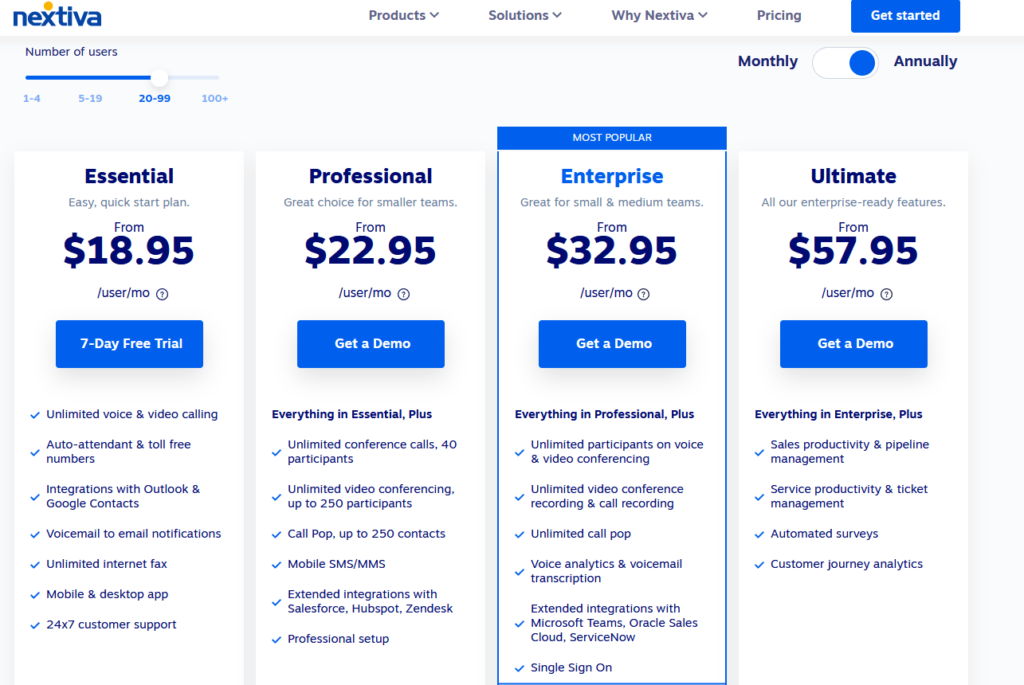Want to jump straight to the answer? The best virtual phone number company for most people is Nextiva or RingCentral.
A virtual phone number allows you and your team to use the same number across multiple platforms, including mobile and desktop. Rather than using your personal phone number for work, you can use a virtual phone number instead.
The Top 8 Best Virtual Phone Number Companies:
- Nextiva — The Best Overall (For a limited time get 25% off when you sign up!)
- RingCentral — The Best for Advanced Features
- CallHippo — The Best for Vanity Numbers
- Ooma — The Best for Hybrid Workplaces
- Talkroute — The Best for Call Centers
- 800.com — The Best for Toll-Free Numbers
- Google Voice — The Best for Free Virtual Phone Numbers
- eVoice — The Best for Faxing
Now that you know our picks, let’s dive in.
Nextiva — The Best Overall
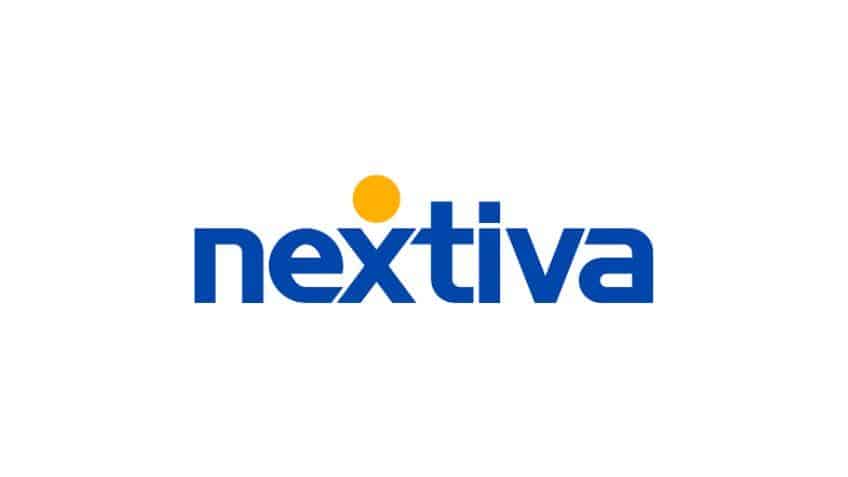
Having a local number is a huge advantage for any business. It’s a simple thing that builds subconscious trust in customers and prospects. It also allows larger organizations to seem more approachable and accessible.
With Nextiva, you can achieve that and make inroads into new locales with as many virtual local numbers as you need.
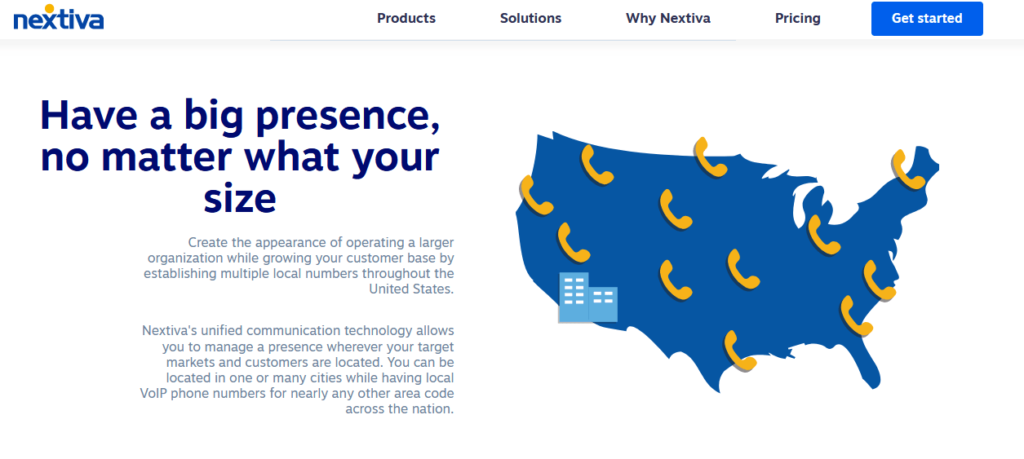
Both local and toll-free numbers (as well as fax numbers) come standard on every Nextiva One plan. Nextiva One ties together voice and video calling, faxing, texting, and team messaging all in one easy-to-deploy platform.
Since it’s completely VoIP-based, there’s no need for complicated installation or implementation and your teams can even use mobile devices on the platform in addition to your current desk phones and computers.
Nextiva plans all feature unlimited voice and video calls. Plus, you get important inbound call fielding features, like an auto attendant, voicemail notifications via email, and dedicated Nextiva apps for both mobile and desktop.
That all comes on the base Essentials plan, which starts at $18.95 per user per month.
**Nextiva runs promotions often and you can save even more on the plans below. Click here for the current sale prices.
Upgrade to other plans for more features to help your team in multiple ways, like video conferencing, desktop call pop, software integrations, and more.
Create a local presence no matter where you’re located or how big your organization gets. Get virtual numbers and everything else your team could need for communication from Nextiva.
RingCentral — The Best for Advanced Features
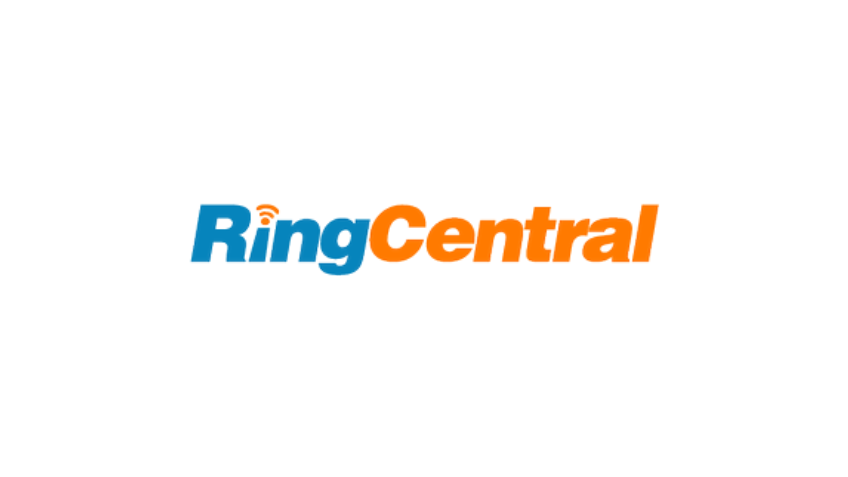
RingCentral offers robust features for businesses that need it all.
From video conferencing for up to 200 people to file sharing and team messaging, RingCentral is a comprehensive solution.
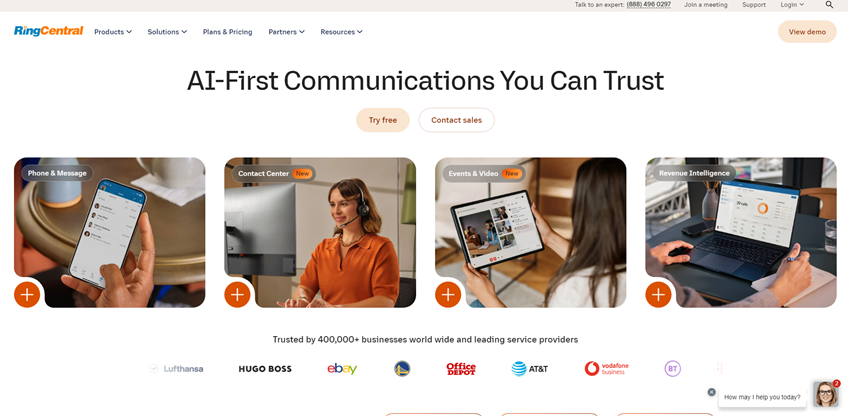
Growing teams that need a system to scale with them are well-served with RingCentral. You can set up new users and departments quickly and efficiently, and there are extensions, shared lines, and a useful auto-receptionist feature available from the start.
The admin portal enables you to view usage, track service quality, and even manage dynamic call routing. The system also easily manages automatic voicemail transcription, live switching, and call delegation.
Other features of RingCentral include:
- Unlimited business SMS
- Toll-Free and local numbers
- Online meetings
- Multi-level IVR
- Mobile and desktop apps (both iOS and Android)
- Internet faxing
- Cloud PBX
- Third-party integrations
RingCentral offers three comprehensive plans, including Core, Advanced, and Ultra, to accommodate businesses of all sizes and communication needs.
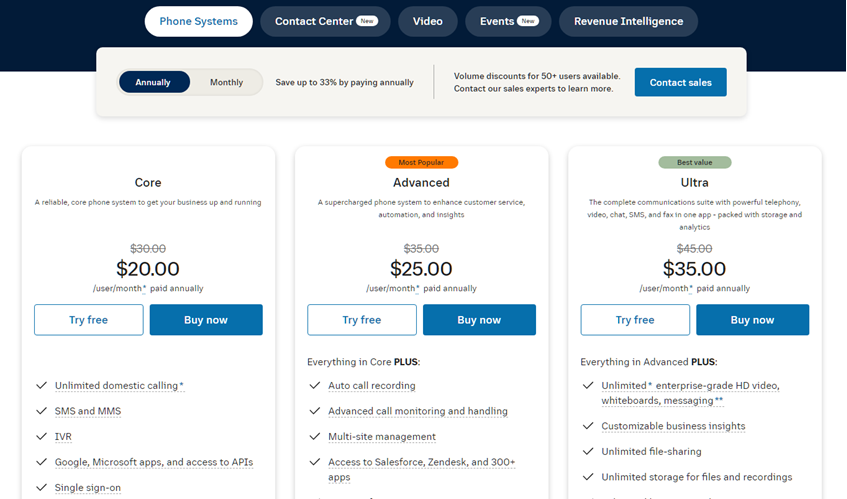
The one drawback I see with RingCentral is that its bevy of features may be overwhelming for those that just need the essentials. Try RingCentral risk free.
CallHippo — The Best for Vanity Numbers
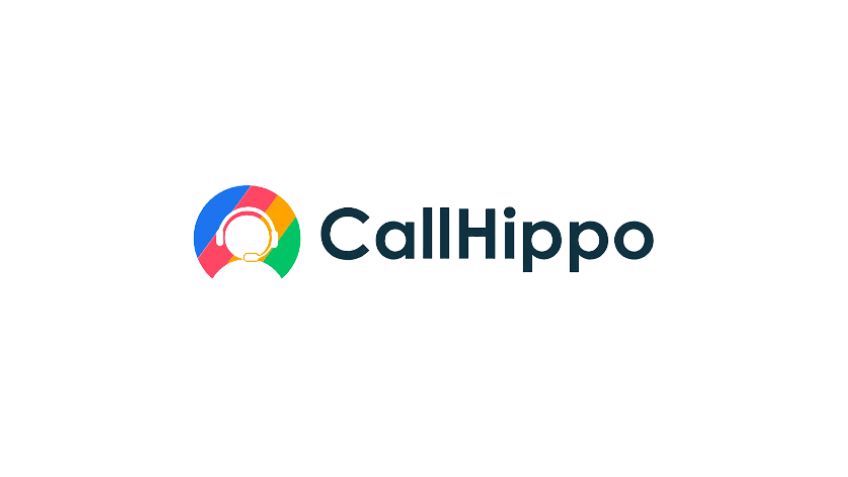
CallHippo will be most useful to brands that are seeking vanity numbers. A vanity phone number is when the digits spell out a word or phrase, such as 1-800-LAWYERS or 1-800-FLOWERS.
Creating a vanity number allows you to pick a memorable number, they’re easier to advertise, and they give your business credibility.

CallHippo makes the search for vanity numbers as simple as possible. It uses a dedicated module for looking up and then allowing you to purchase any vanity number you desire.
It’s this easy-to-use and well-thought-out system that stands out among the crowd. If you need a vanity number with the least amount of hassle, then you don’t need to look any further.
Other useful features of CallHippo include:
- Automatic call distribution
- Interactive voice response
- Fully-optimized segmentation and routing
- Power dialer
- Real-time reports
- Call recordings
- Call transfer
- On hold music
CallHippo offers four payment plans for its service, and keep in mind only one of them, the custom Enterprise variant, offers a free trial:

Each tier offers more features. For example, with the last two tiers, you can forward calls to other devices and use call barging—the latter allows you to listen to live calls discreetly.
Ultimately this comes down to how many features you need to get started, but I think a safe option for most is the Silver tier.
Ooma — Best for Hybrid Workplaces
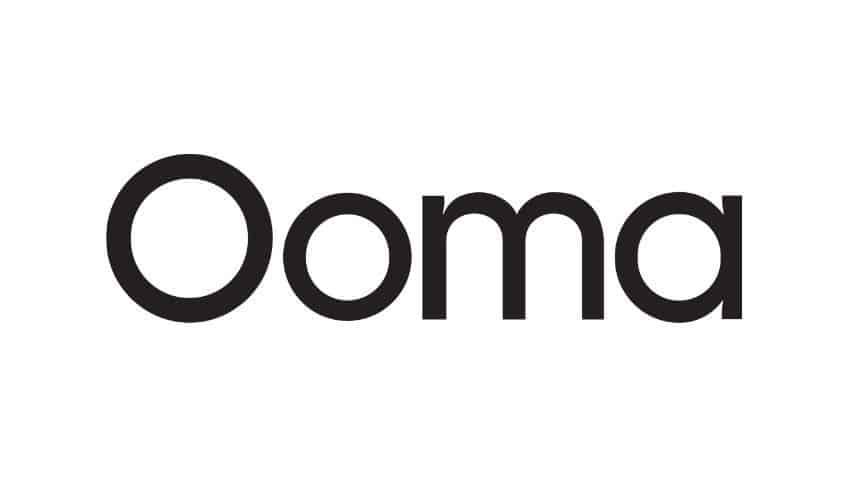
Ooma’s virtual phone numbers are built for small to mid-sized businesses. That’s because every plan has over 50 standard business features designed for smaller offices.
You have the option to select a local or toll-free number, and Ooma even lets you port over your existing number if you want to keep it.
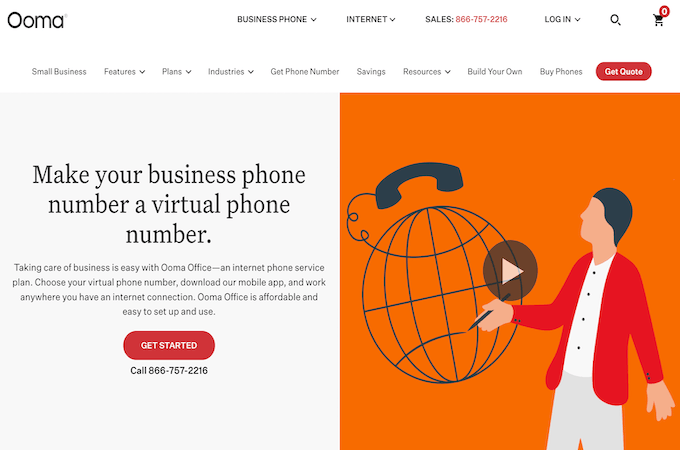
I love Ooma’s simplicity. You can set up your virtual phone system in minutes without any technical expertise or professional installation. This is ideal for offices with a mix of in-house and remote employees.
Even your remote staff can get onboarded with ease, as the system works anywhere with an internet connection.
Once you’ve signed up, you just need to download Ooma’s mobile app, and you’ll be able to make and receive calls from anywhere—so you’re not tied to a specific desk or location.
As a complete office phone system, Ooma provides digital faxing services, hold music, ring groups, and a virtual receptionist with every plan.
Plans start at $19.95 per user per month. But most companies would benefit the most from upgrading to the Pro plan, which starts at $24.95 per user per month.
The extra $5 is worth it, as the plan supports text messaging, video conferencing, call recording, and analytics features. It’s also worth noting that the desktop app isn’t available on the entry-level plan, and you’ll need to upgrade to Pro if you want access to Ooma on your computer.
Ooma is also built to scale, and it’s easy to add new lines and users as your business grows.
Choose your free number to get started with Ooma today.
Talkroute — The Best for Call Centers
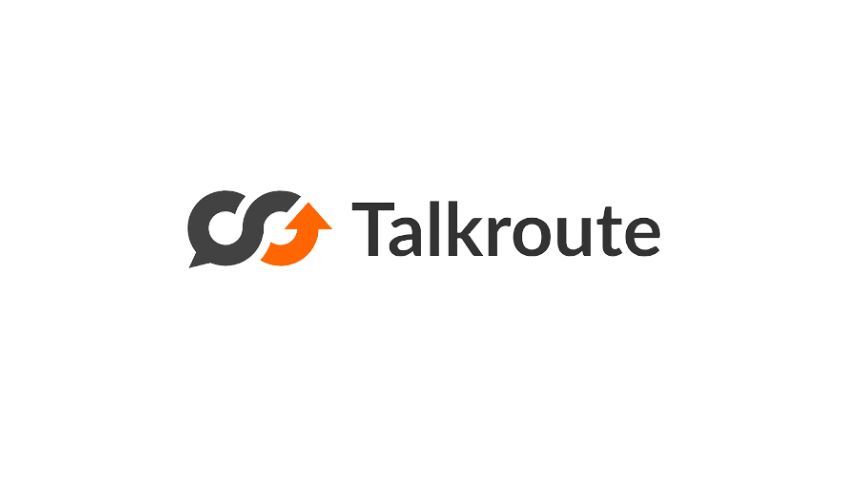
A call center team requires features like call queuing, live transfers, and call reports to keep things running smoothly.
The good news is that Talkroute offers all of these, making it the best option for remote call center teams or those that just need powerful features.
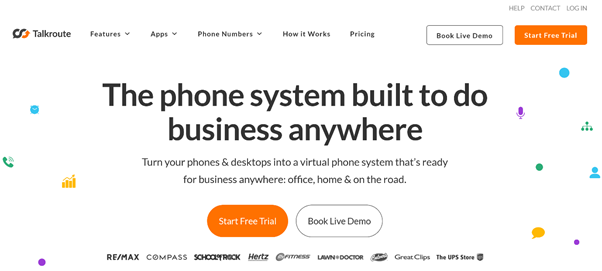
You’ll be able to make and receive calls from desktop or on the go, and there are toll-free, vanity, and even some 800 numbers available.
I particularly like the extension option of Talkroute, which allows callers to get through to the appropriate team without fuss. These can be adjusted in a simple but effective dashboard.
Talkroute also provides the following essentials:
- Text messages
- Call stacking
- Call recording
- Users and permissions
- Caller ID
- Automated messages
- Dial-by-name directories
- Hours of operation
I’m pleased to say that Talkroute offers a free trial for seven days—not all that common with other providers—and you can book a live demo to get a taste of things.
On the pricing front, there are four main tiers:

I would recommend the Plus tier here as a reliable first option, mainly because it offers two local and toll-free numbers, unlimited text messaging, and three account users.
If you need more users, then it’s not until the Pro variant that you receive 10 of them.
800.com — The Best for Toll-Free Numbers
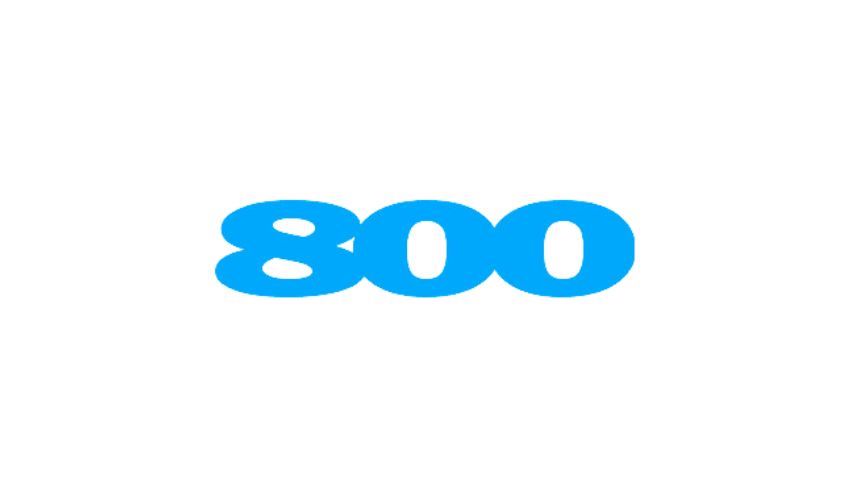
800.com is a virtual phone number provider that is best for those looking for toll-free numbers.
As the name might suggest, a toll-free number allows callers to reach businesses and individuals without being charged to do so.

The toll-free nature of 800.com makes it a great option for businesses in telemarketing and those providing customer service.
A business number that’s free to call is far more likely to be used by a customer. This increases engagement and potential sales.
Other key features of 800.com include:
- Call forwarding
- Call blocking
- Call notes
- Call recording
- Call and fax reports
- Caller ID
- Voicemail to email
- Call notifications
800.com offers three core plans: Personal, Unlimited, and Pro. It’s worth mentioning that each of these can be paid for either monthly or annually, but you will save money opting for the annual option, so I recommend it.
The plans vary on features, but the key difference between them is how many toll-free numbers you can access and the minutes you get.
The three tiers are:
- Personal – 1000 minutes, one toll-free number, $19 per month
- Unlimited – Unlimited minutes, one toll-free number, $49 per month
- Pro – Unlimited seats, 5000 minutes, and five toll-free numbers, $199 per month
I really like that there are no setup fees, and you can cancel at any time.
Google Voice — The Best for Free Virtual Phone Numbers

If all you need is a free virtual phone number and you freelance or work alone, Google Voice is the best choice.
It’s fair to say you get everything you need for the unbeatable ‘price’ of free.
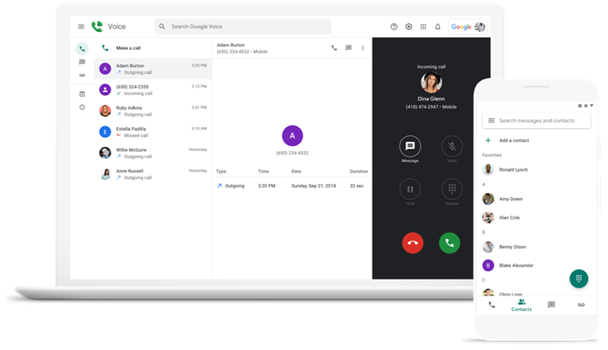
With Google Voice, you’ll be able to send texts, make domestic calls, and it includes call recording—at no extra cost—which is always handy.
You’ll be able to choose a free local number with the prefix based on almost all of the central area codes of the US.
What’s more, there are full mobile apps available for both iOS and Android devices, so you aren’t short on options, wherever you are.
Google Voice also offers:
- Collaboration tools
- Conferencing functionality
- Instant messaging
- Real-time reports
- Caller ID
- Automatic notifications
- Activity dashboard
- Third-party integration
I’ve mentioned that it’s free to use Google Voice for personal numbers, but if you’re a business, there are options available for you, too.
Google Voice’s business plans are the following:
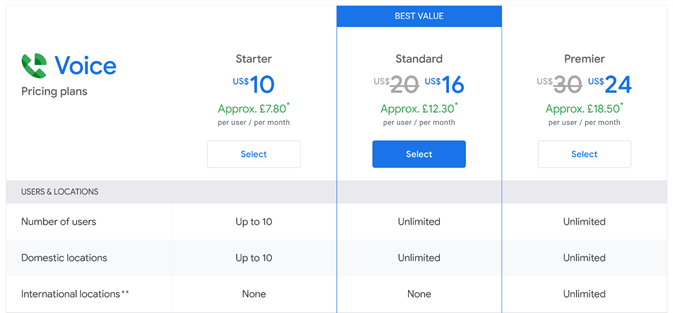
The key difference here is, of course, the number of users and domestic locations available. Think carefully about what’s right for you.
While I wouldn’t immediately say that Google Voice is the number one option for businesses due to its limitations, you could do far worse, and the service is basically the free version with some added perks.
eVoice — The Best for Faxing
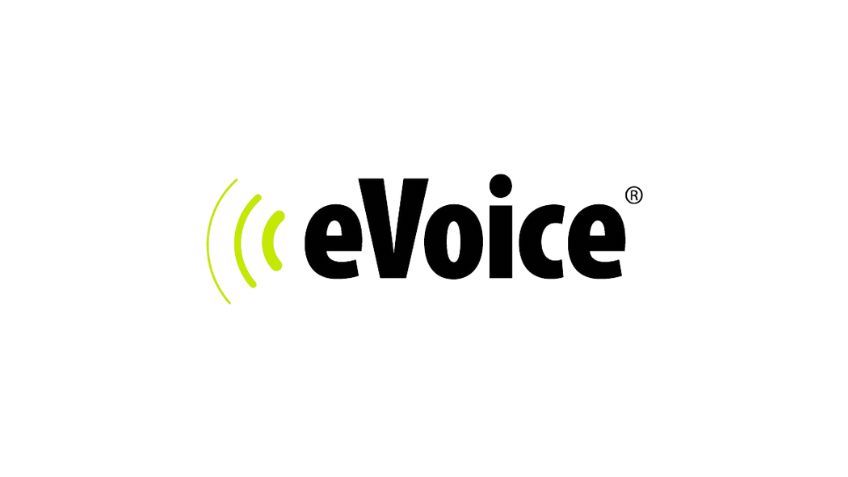
Business calls might not be the only feature you need—what about integrated faxing capabilities, too? Many businesses still use faxing regularly to send and receive documents, though it is mostly digital faxing these days.
Well, eVoice has you covered. It offers call forwarding, texting, and faxing all in one neat package.

All of that makes the software ideal for freelancers, real estate agents, and others that need the added functionality for daily use.
I particularly like its ability to transcribe your voicemail and email or text it to you.
On top of all that, eVoice also offers the following:
- Studio recorded greetings
- Outbound calling app
- Call scheduler
- Call forwarding
- Virtual receptionist
- Call redirection
- Dedicated mobile apps
- Live support
eVoice’s website only shows one pricing plan, called Elite, which comes with unlimited calls, users, and lines, plus an auto-attendant and 24/7 customer support for $12 per user per month when billed annually.
With that said, it does, of course, depend on your business’s needs, and you can speak with eVoice to get a customized plan based on your preferences. eVoice offers a 30-day money-back guarantee.
How to Find the Best Virtual Phone Number Company for You
Finding the best virtual phone number company or provider for you pivots on your individual circumstances.
Use Case
For example, if you work alone or freelance, then it’s unlikely you will need a suite of tools as powerful like RingCentral offers. Google Voice would be a better option here.
On the other hand, these extra features could be critical for medium-sized and enterprise-grade businesses.
So, the first important thing to think about is: what exactly do you need now and for the future?
Different providers target various scenarios. For example, eVoice and its faxing capabilities would be best suited to real estate agents, freelancers, small law firms, and other document-heavy businesses.
How about international calls or number porting? Number porting takes an existing business number and ports it over to the new provider where available. How essential would that be for you?
Type of Virtual Phone System
The other thing to mention is the different types of virtual phone systems. The main ones are cloud-hosted systems, VoIP-based virtual systems, and app-based virtual providers.
Don’t think too hard about this. App-based virtual providers are basic, and I wouldn’t recommend them for long-term growth. That leaves us with cloud-hosted systems and VoIP-based virtual systems.
The bottom line is that both systems move away from more traditional, physical landline systems and therefore simplify matters. Cloud-based systems tend to have the edge overall, as your provider and their platform handle any issues, but both are good options.
Toll-Free Numbers
Toll-free numbers are essential for most businesses because customers don’t have to pay anything to call you. It almost goes without saying how important that is to increase engagement with a brand.
Making it free for customers to call you can supercharge trade, and companies that focus on customer service should make this a top priority. Most providers on this list offer toll-free numbers.
Of course, this again depends on general circumstances. A freelancer or solo worker probably won’t need to place this high up on their list.
Extensions and Routing
Extensions and the ability to route calls enable you to direct inbound calls to the right place. A multi-department company is an example of when this would be an essential feature.
Determine the number of rings before a call is routed and the order in which the numbers will ring. Although, not every provider on this list offers extensions or call routing.
If you’re a growing company, this functionality may also be something to consider for future growth.
Setup Process
Some setup processes differ between virtual phone number companies, but it’s fair to say that few will be complicated or time-consuming.
Most of the providers on my list offer quick and straightforward setup processes that allow you to spend the time elsewhere. However, it’s always worth asking about the installation and deployment process in detail before opting for a specific provider.
For example, what’s needed from you to get up and running? Some virtual phone number providers require very little and promise instant setups, while others might require a local number or additional details.
Most people will want a quick provider setup with support available if they get stuck along the way.
Conversely, you might be okay with spending additional time getting a system set up to precise requirements.
The Top Virtual Phone Number Companies in Summary
Nextiva and Ooma are the two best virtual phone number companies. As more and more people turn to virtual phone number systems, the companies that provide these services will increase to meet the demand.
Virtual phone numbers improve privacy and eliminate the need for business professionals to use their personal phone numbers for work-related calls.

